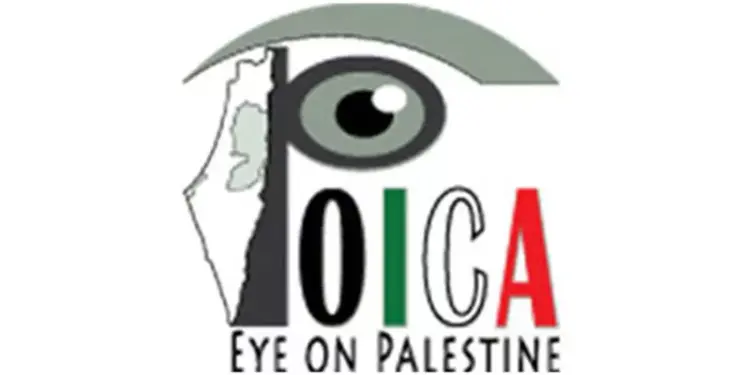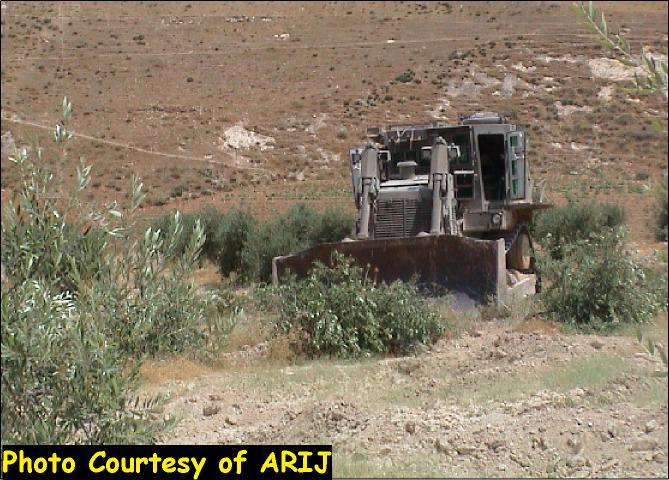Introduction
Once again, the Israeli juristic decisions led to the dismissal and displacement of nine Palestinian families from the homes they have been living in for more than 50 years in Sheik Jarah quarter north of the old city of Jerusalem. This latest action came as an appeasement to Jewish settlers and in compliance with the Israeli government's policy to consolidate Jewish presence in various Palestinian quarters of Jerusalem.
On 10.03.2002, the higher Israeli court ratified the dismissal of six Palestinian families from Al- Ghawi extended family and three families from Hanun extended family. The six Ghawi families are comprised of 38 members including 23 children, while the three Hanun families are comprised of 16 members including 8 children. The court's decision stipulated that if the nine families didn't leave their houses by 8 AM, April 18, 2002, the Israeli police would evacuate them by force and confiscate their belongings. The nine families received the court's decision on 20.03.2002.
Legal and historical Back ground
Land location: Sheik Jarrah, Jerusalem, Plot 30093 (pieces 8,9,10,15).
Area: 17 Dunums
The land contains a tomb for a Muslim religious dignitary named Ma'u Al- Saidi who was buried there 300 years ago. However, a Jewish group claimed that the tomb is for a Jewish man named 'Simon the truthful. Hence, the dispute took place.
Phase One:
The case goes back to 47 years ago when the Jordanian government, represented by the Ministry of Construction, made a contract with the United Nations Relief and Works Agency ( UNRWA)- date of contract 16.11.1954- according to which the Jordanian government provided the land after having divided it into 28 pieces and UNRWA built 28 housing units for Palestinian families who were dismissed from their homes west of Jerusalem during the war of 1948.
On 03.07.1956, an agreement was signed between the Jordanian government and beneficiary families who received the housing units. Item 11 of this agreement stipulated that the tenants wouldn't pay any rent. Item 12 stipulated that this agreement would have no effect whatsoever on the rights of the tenants to return to their original homes or to receive any compensations or on any other political or economic rights.
In 1962, the Jordanian government, also, gave tenants the right to get the units rented to another party and benefit from it.
On 04.03.1964, the Jordanian Ministry of Construction gave permission to add another two rooms to the original building which only comprised two rooms with their facilities. Two years later, the Jordanian government decided that each tenant pay 300 JD as fees for the transformation of ownership in his/her name. However, the 1967 war and the occupation of Jerusalem stopped this deal.
Phase Two:
-
In 1970, Israel issued the so-called law of ' Land restoration' which allowed each land owner to demand the restoration of his land.
-
In 1971, the Jewish Sifardim association based in Jerusalem claimed ownership for the land of Sheik Jarrah.
-
On 11.09.1972, the Israeli general land governor issued a land restoration certificate according to which the Jewish Sifardim association was allowed to claim the land in courts.
-
In 1972, the Sifardim association and the council of Israel's synagogues started to claim the land in the Jerusalem Magistrates court, demanding the evacuation of the house of Al- Ayubi family, house of Saba family, House of Husseini family and house of Hamad family.
-
On 27.05.1973, the Jerusalem Magistrates court refused the case and forced complainers to pay compensation for the defendants' lawyer.
-
In 1974, the two Jewish groups demanded the removal of the additional structure which was built on the land.
-
On 01.11.1978, the Magistrates court refused the appeal of the two Jewish groups against the families of Ayubi, Saba and Husseini. In its decision the court confirmed that the families lived in the houses legally in accordance with correct procedures taken by the Jordanian law and acknowledged by the Israeli law.
-
On 30.06.1982, the two Jewish groups filled a complaint against the rest of families demanding their removal and payment of rent since 1956. The court didn't accept the case on the basis that the two Jewish groups had lost heir legal right of ownership because of the correct legal measures taken by the Jordanian government.
-
On 12.07.1989, another case was presented against 14 Palestinian families who were surprised by a new court decision contradicting all previous ones. The new decision considered the families as tenants who should pay rent for the whole period from 1956 until that time. It was clear that this contradictory position was taken through collaboration between lawyer Izaq Cohin, a Jew, who was representing the Palestinian families and the lawyer of the two Jewish groups. The court took part in this collaborator deal by approving it without giving much attention to legal evidence provided by families who refused to accept this deal.
-
In 1992, the Israeli high court ratified the aforementioned illegal deal and became an official one.
-
In 1994, the Jewish groups presented a number of cases against the families to force them pay rent.
Phase Three:
The Palestinian house owners went to the Orient House asking help from Late Faisal Husseini. Husseini transformed the file to the Land Research Center (LRC) for follow-up.
LRC experts began to study the file and found that 75 % of Sheik Jarah land under dispute was owned by the Palestinian family of Higazi represented by Mr. Suleiman Darwish Higazi who obtained ownership documents dating back to year 1736.Lawyer Husni Abu- Hussein was appointed by LRC to defend the case in Israeli courts.
In 1994, he presented a case to the Israeli central court in which Mr. Suleiman Hijazi submitted the ownership documents he obtained including an Otoman Tabu. Mr. Hijazi, by consensus of three judges, obtained a decision in his favor.
In 2000, the 7 families including owner Suleiman Hijazi presented a case to the Magistrates court demanding the abolition of the deal held in 1989 between lawyer Ishaq Cohin and the lawyer of the two Jewish groups which was not in favor of the Palestinian families.
On 22.04.2002, at 10 PM, hundreds of Israeli soldiers raided the 9 houses and dismissed their Palestinian occupants who became refugees.
The Israeli dismissal decisions were political rather than legal
The Israeli occupation and judicial system are two opposites, especially when it comes to land issues. This rhetoric is very well proved out of the experience of human rights organizations working in the occupied territories. The latest Israeli dismissal came as a new proof to the continuation of the policy of land and property expropriation.
The following table provides the names of the nine families dismissed from their houses in Sheik Jarrah on 22.04.2002:
|
No. |
Name of family |
No. of family members/children |
No. of rooms |
|
1 |
Salim Khalil Hanun |
5/1 |
4 |
|
2 |
Majid Khalil Hanun |
6/4 |
3 |
|
3 |
Maher Khalil Hanun |
5/3 |
3 |
|
4 |
Abdul Fatah Al-Ghawi |
3 |
3 |
|
5 |
Munir Al-Ghawi |
8/6 |
3 |
|
6 |
Khamis Al- Ghawi |
9/6 |
3 |
|
7 |
Attaf Al- Ghawi |
6/3 |
3 |
|
8 |
Naser Al- Ghawi |
5/3 |
3 |
|
9 |
Khalid Al- Ghawi |
7/5 |
3 |
|
Total |
54/31 |
28 |
|
Prepared by
The Land Research Center
LRC












